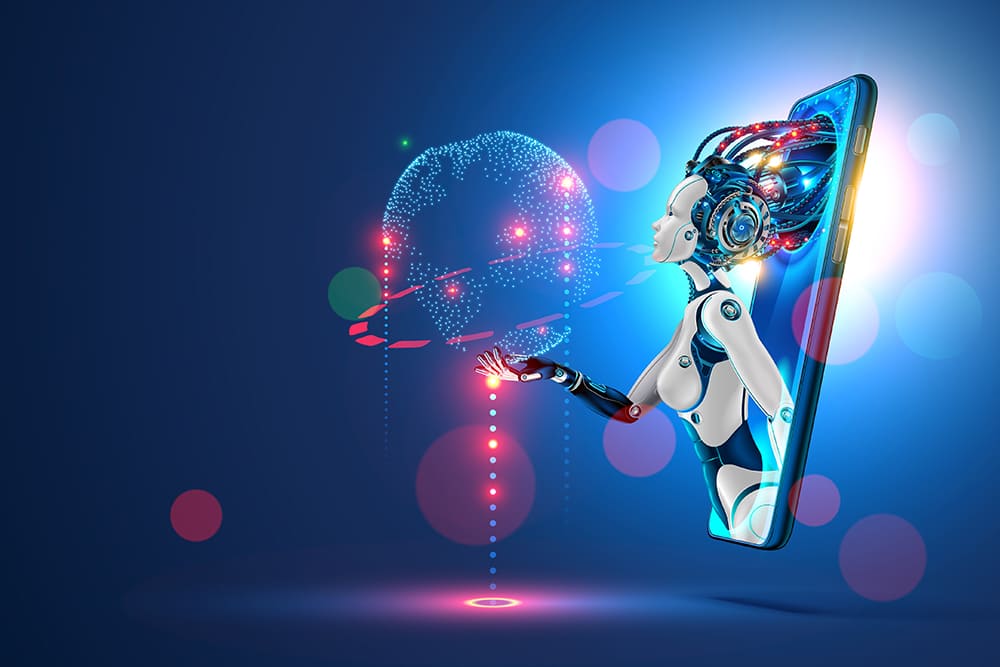What is Weak (Narrow) AI? Here Are 8 Practical Examples
2 July 2021
Weak AI, otherwise referred to as narrow artificial intelligence, describes the algorithms that can complete a set of finite functions. Currently, this is the only artificial intelligence that exists. The algorithms classify data and then make decisions or act based on how they were told to interpret that date. Here are eight practical examples.

When the term artificial intelligence (AI) is used today, in most cases, it refers to weak AI. Also known as narrow AI, this is the only AI that exists today. Although weak AI can solve complex problems and often complete tasks more efficiently than humans, its functionality is limited to its programming. Even with a name that suggests limitation, weak AI infiltrates many aspects of our work, personal lives, and entertainment. Here is a bit more about weak AI and eight practical examples of it.
What is Weak (Narrow) AI?
Algorithms that power weak AI model human intelligence and work to accomplish specific tasks rather than possess full cognitive abilities like the human brain. Ultimately, the algorithms are trained to classify data based on how they were trained. There is no veering off the programmed path; narrow AI is programmed to operate within a set of pre-defined functions. For example, machines created to pick items in a warehouse aren’t able to flip burgers in a restaurant without human intervention to change the programming. Narrow AI models intelligent behavior for specific tasks.
8 Practical Examples of Weak/Narrow AI
Just about any AI that you can think of that is used today—not representations from the movie screen or from pages of sci-fi novels that show robots taking over the world, though—are examples of narrow AI. Here are eight practical examples:
- Digital voice assistants (Siri, Alexa)
Often referred to as the best examples of weak AI, digital voice assistants such as Siri and Alexa are examples of weak AI that we rely on every day. To work effectively, the AI classifies data and responds to queries incredibly fast.
- Recommendation engines
Whether Netflix is telling you what movie you should watch next or Amazon or other retail websites offer you helpful advice about what you else you might be interested in purchasing, these recommendation engines are examples of narrow AI.
- Search engines
Google and other search engines are also examples of weak AI. When you type in your question, the algorithm gets to work to run that question through its vast database to classify it and come back with answers.
- Chatbots
If you’ve ever talked on chat with an organization, whether it’s your financial institution, internet service provider, or favorite e-commerce store, you were likely talking to AI. Most of the time, chat features are an AI algorithm that takes care of answering common questions to free the humans who used to do this work to complete higher-level tasks.
- Autonomous vehicles
AI that allows vehicles to operate without a human driver is weak AI. The algorithms complete programmed functions. The challenge, since this AI doesn’t possess full cognitive abilities like a human brain, is to program and train the AI regarding any potential road hazard or situation the vehicle might encounter.
- Image and speech recognition
A critical way narrow AI is making an impact in healthcare is through image recognition by helping radiologists detect disease in scans of patients. Weak AI is behind image recognition in other industries as well. It’s also in play with speech recognition and translation services like Google Translate.
- Predictive maintenance and analytics
Narrow AI is used in predictive analytics. It uses data, algorithms, and machine learning to examine historical data to construct a prediction of a likely outcome in the future. In warehouses and other places where heavy machinery is in use, AI helps identify maintenance issues that need to be addressed before a machine failure.
Currently, robots don’t have a mind of their own. Drones and manufacturing robots operate with narrow AI and are able to complete a finite set of actions they were programmed to do. Delivery bots were quite useful to comply with social distancing orders and as disinfecting robots during the pandemic.
Narrow artificial intelligence is the technology that exists today, and you experience in daily life. The algorithms that power narrow artificial intelligence allow machines to act, process data, and make decisions based on programming. This is not AI with a mind of its own. Weak or narrow AI, despite the implication by its name that it’s not powerful, is actually responsible for many amazing activities. AI allows many things to be done much more quickly and efficiently than humans can.
Where to go from here
If you would like to know more about , check out my articles on:
- Are Alexa And Siri Considered AI?
- How To Put AI Into A Business To Accelerate Performance?
- What Is The Impact Of Artificial Intelligence (AI) On Society?
Or browse the Artificial Intelligence & Machine Learning library to find the metrics that matter most to you.
Related Articles
A Beginner’s Guide To Building AI Agents
By now, “smart” versions exist of just about every home appliance, gadget and gizmos we can think of. However, manufacturers continue[...]
5 Business Trends Every Company Must Prepare for in 2026
By now, “smart” versions exist of just about every home appliance, gadget and gizmos we can think of. However, manufacturers continue[...]
The Quantum Revolution Is Here, And It’s About More Than Just Computing
By now, “smart” versions exist of just about every home appliance, gadget and gizmos we can think of. However, manufacturers continue[...]
AI Browser Agents Radically Transform How We Use The Internet
By now, “smart” versions exist of just about every home appliance, gadget and gizmos we can think of. However, manufacturers continue[...]
The 6 Defining Manufacturing Trends Of 2026
By now, “smart” versions exist of just about every home appliance, gadget and gizmos we can think of. However, manufacturers continue[...]
Enterprise AI Meets The Digital Labor Economy: My Highlights From Workday Rising EMEA
By now, “smart” versions exist of just about every home appliance, gadget and gizmos we can think of. However, manufacturers continue[...]
Sign up to Stay in Touch!
Bernard Marr is a world-renowned futurist, influencer and thought leader in the fields of business and technology, with a passion for using technology for the good of humanity.
He is a best-selling author of over 20 books, writes a regular column for Forbes and advises and coaches many of the world’s best-known organisations.
He has a combined following of 4 million people across his social media channels and newsletters and was ranked by LinkedIn as one of the top 5 business influencers in the world.
Bernard’s latest book is ‘Generative AI in Practice’.










Social Media